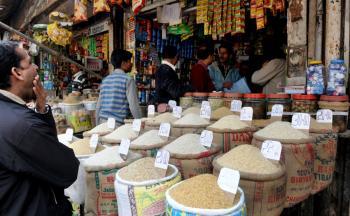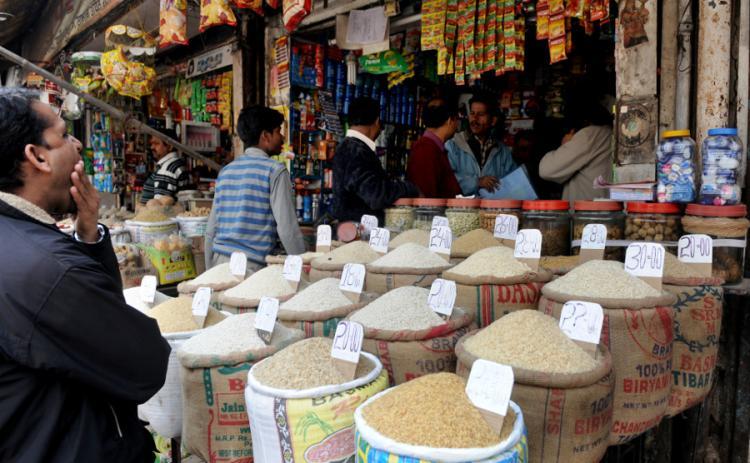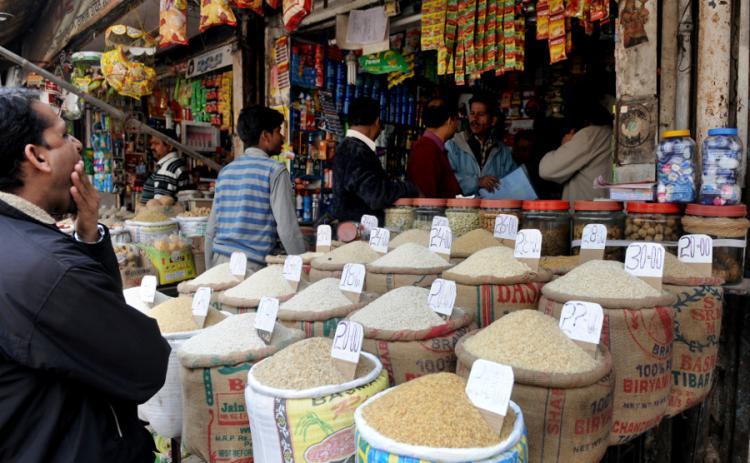Food Prices at ‘Dangerous Levels,’ World Bank Says
Buying food at the store is growing more and more expensive. Unless something is done, the World Bank is warning more and more families will be pushed into poverty.

HIGH PRICES: Indian customers purchase grains from a shop at a market in New Delhi on Feb. 16. Rising food prices will put more than 40 million people in poverty if left unchecked, World Bank says. Raveendran/AFP/Getty Images
|Updated:





